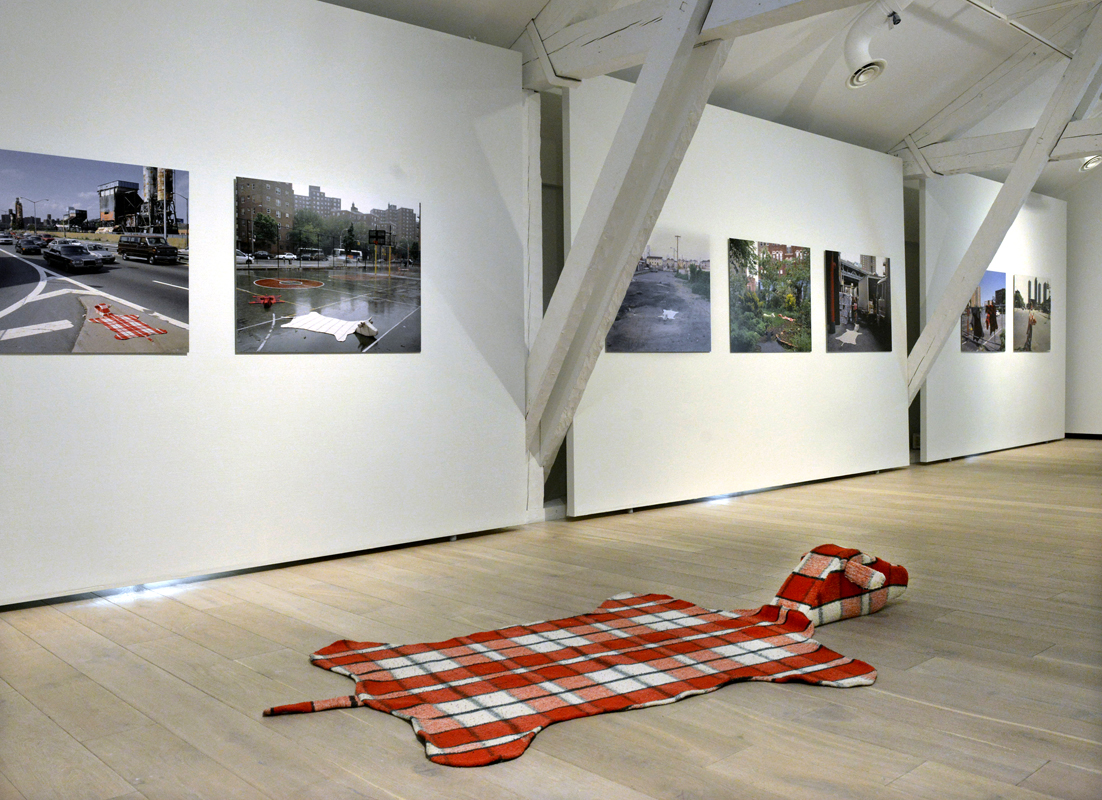








Cows in New York City: Reintroducing the Species
While visiting Staten Island, NY, in June 1999, Kaisu Koivisto explored the history of the area. This inspired her to make a project about the urban development of the greater NY area, and to trace if there are some signs left of the farms and pastures of previous decades and centuries.
For this project Kaisu Koivisto took cows back to the places that used to be farms or grazing land – in the 19th century or as recently as a few decades ago. She made “cow skin rugs” out of old blankets, which she bought at thrift stores. The blankets represent home and warmth. They also bring an element of humor: black and red plaid cows look amusing. And, at the same time disturbing – something from a private realm brought into a public space. The herd of blanket cows is homeless, displaced, in an urban environment. The surroundings are an important element in the photos.
Koivisto extended the project to include all the five boroughs of New York City. In order to find the places where the farms used to be, she researched the archives of the Staten Island Institute, Staten Island Historical Society, Museum of the City of New York, The Bronx Historical Society, Long Island Division of the Queens Borough Public Library, and the Brooklyn Public Library.
Old maps and photographs were a useful resource. Comparing 19th and early 20th century maps with current maps showed the way how farmland has become residential areas.
—–
The series has been shown at Newhouse Center for Contemporary Art, Staten Island, New York; and Pori Art Museum, Pori, Finland (2000), Photographic Gallery Hippolyte, Helsinki, Finland , Hafnarborgin Art Centre, Hafnarfjördur, Iceland, Galleri Enkehuset, Stockholm, Sweden (2001), and E.Jaske Gallery,Sydney, Australia (2005)